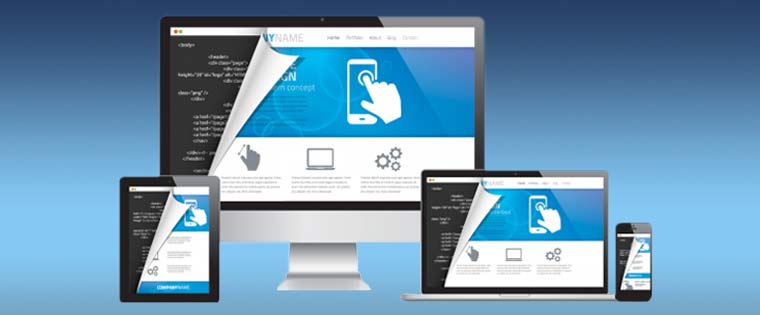10 Creative Ways to Design Impactful Product Knowledge Training
Explore how to design impactful product knowledge training and ensure that your team understands, promotes, and sells your products effectively.

In the dynamic landscape of modern business, product knowledge is the linchpin that transforms a team from good to great. As the heartbeat of successful sales and customer engagement, a well-informed team can make all the difference. So, how do you ensure your product knowledge training goes beyond the mundane and becomes a catalyst for excellence? In this blog, we will explore 10 innovative and impactful strategies to design product knowledge training that not only sticks but sparks a fire of enthusiasm within your team.
Curious to Explore Creative Ways to Design Impactful Product Knowledge Training?
Well, here are a few of them -
- Gamification
- Storytelling
- Product speed dating
- VR showcases
- Mobile learning apps
Read on to explore 5 more creative ways.
10 Creative Ways to Design Impactful Product Knowledge Training
1. Interactive Workshops and Simulations
Interactive workshops and simulations offer more than just conventional training—they provide an experiential journey into the heart of your products. Imagine a workshop where team members step into a simulated customer environment, facing real-time challenges and utilizing product knowledge to overcome them. This hands-on approach enhances retention and practical application.
When it comes to simulations, you can immerse your team in dynamic, scenario-based learning environments where they grapple with real-world challenges, applying product knowledge in hands-on experiences. Set up interactive product stations that allow tactile exploration, turning theoretical understanding into practical mastery. Incorporate competitive simulation games to foster teamwork and engagement, providing immediate feedback for continuous improvement. By embracing cross-functional collaboration, these workshops ensure a holistic understanding of products, promoting synergy within the organization.
→ Download Checklist Now: How to Develop Effective Online Training Programs
2. Gamification
Gamification injects an element of excitement into the learning process, transforming traditional training into an engaging adventure. The concept revolves around incorporating game mechanics, such as points, badges, and leaderboards, to motivate and challenge participants. Implement leaderboards and tournaments to infuse a sense of healthy competition, motivating individuals to strive for excellence. Hide surprise challenges or "Easter eggs" within the training modules to keep participants engaged and curious. Utilize a narrative-driven progression that unfolds a storyline as participants advance, making the learning experience not only educational but also entertaining and memorable.
3. Storytelling
Storytelling transforms dry product information into a compelling narrative, making it relatable and memorable. By weaving real-life customer stories around your products, you create an emotional connection that resonates with your team. Create character-centric narratives that embody target customer personas, placing products within relatable contexts. Explore the historical evolution of products, providing depth and context to their features and benefits. Host interactive storytelling workshops where teams collaboratively craft stories, tapping into collective creativity and reinforcing product knowledge in an engaging manner.
4. Role-Playing Exercises
Role-playing exercises immerse participants in lifelike scenarios, allowing them to practice and refine their product knowledge in a safe and controlled environment. This approach is particularly effective in developing effective communication skills. Encourage participants to switch roles, fostering a holistic understanding of the product lifecycle and strengthening cross-functional collaboration. Introduce unexpected obstacles or objections, challenging participants to think on their feet and enhancing their ability to handle diverse situations with confidence. Utilize video-based role-playing for collective review, offering valuable insights into communication styles and facilitating continuous improvement.
5. Augmented Reality(AR) Adventures
Augmented Reality (AR) Adventures takes product knowledge training to the next level by merging the real and virtual worlds. Imagine equipping your team with AR devices to explore products in a three-dimensional, interactive space. This hands-on approach allows employees to delve into the intricate details of products, turning learning into an immersive adventure.
You can develop an AR app that overlays detailed product information onto physical items. Create virtual guided tours where team members can walk around a virtual showroom or factory, interacting with AR-enhanced products. Organize AR scavenger hunts where participants use their devices to hunt for hidden product information. Incorporating live product demonstrations and collaborative AR projects enhances the learning adventure, making it both informative and entertaining.
6. Product Speed Dating
Product Speed Dating transforms learning into a dynamic event by setting up rotational product stations, where team members engage in quick yet structured introductions. Timed Q&A sessions and rating cards facilitate active participation, and the interactive networking aspect fosters a sense of community. This innovative approach encourages rapid connections and ensures that team members gain quick but comprehensive insights into various products.
7. Artistic Infographics
Artistic Infographics leverage visual storytelling techniques, utilizing iconography, symbols, and color-coding systems to simplify complex product information. These visually stunning representations compare products, making them easy to understand and recall. Interactive infographic workshops empower employees to express their creativity, reinforcing learning through a collaborative and visually engaging approach.
8. VR Showcases
VR Showcases transport employees to virtual showrooms with 360-degree product views, interactive demonstrations, and simulations of real-world applications. This immersive experience enhances understanding and retention by allowing team members to engage with products on a deeper level. Collaborative VR spaces further promote teamwork and knowledge sharing, creating a shared virtual environment for exploration. Even if not for VR, you can have simple 360-degree videos as well, and here are a few of its use cases.
9. Reverse Engineering Challenges
Reverse Engineering Challenges introduce hands-on learning by setting up disassembly workstations and guided sessions led by product experts. This collaborative problem-solving approach encourages teams to document their disassembly process, fostering teamwork and systematic analysis. Reassembly competitions add a competitive yet exciting element, testing participants' understanding of product structure and functionality while reinforcing key learning points.
10. Mobile Learning Apps
Mobile learning apps provide a flexible and accessible platform for continuous product knowledge reinforcement. With on-the-go accessibility, bite-sized information, and interactive features, these apps empower employees to reinforce their understanding of products whenever and wherever it suits them. Quizzes, challenges, and customizable learning paths ensure personalized and engaging learning experiences, making product knowledge easily digestible and readily applicable in the fast-paced world of modern business.
Wrapping Up!
In the realm of effective workforce development, the journey to master product knowledge transcends conventional approaches. Creativity is the catalyst for lasting impact. By embracing these unconventional methodologies, organizations can cultivate not only a well-informed team but also a workforce that is inspired, engaged, and primed for success in showcasing and selling their products. Also, if you have a remote workforce, here’s a free checklist to help you with your online product knowledge training as well as other online training sessions. Download it now!




![Online Training — How to Develop Effective Programs [Checklist]](https://no-cache.hubspot.com/cta/default/59327/ae131a0f-e51b-4928-8e55-88f70c46a14e.png)


